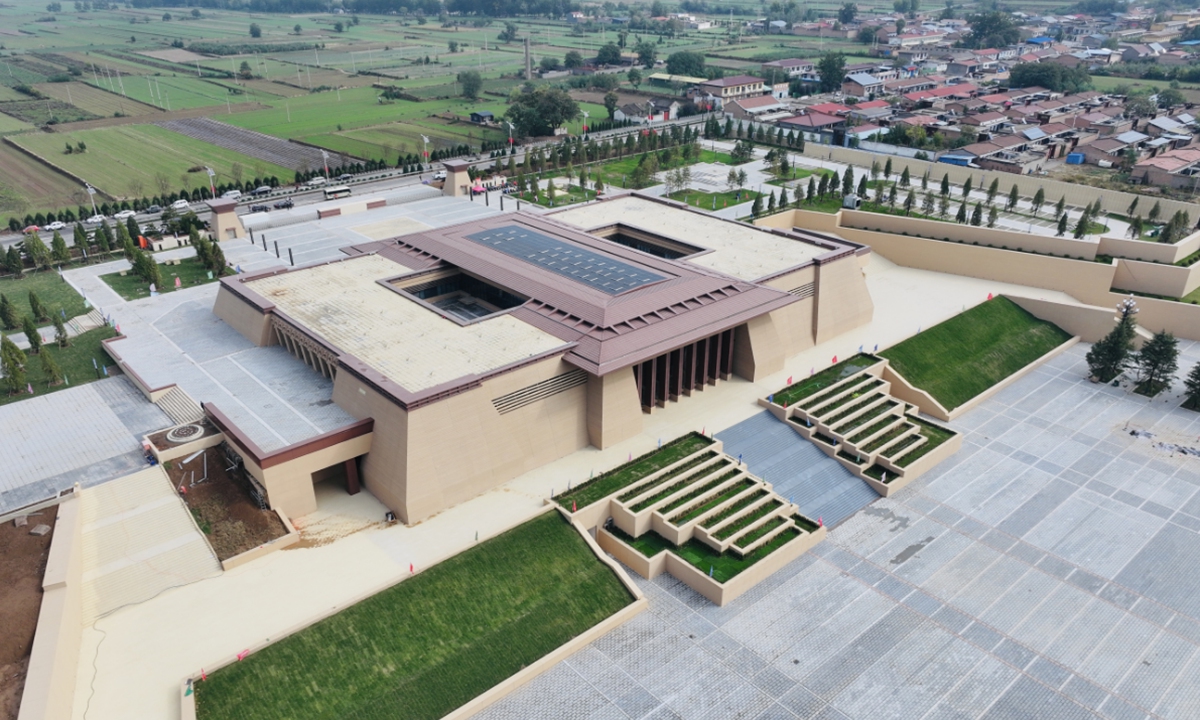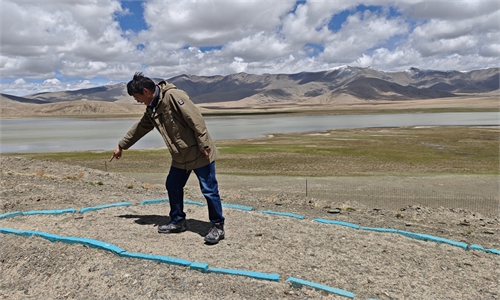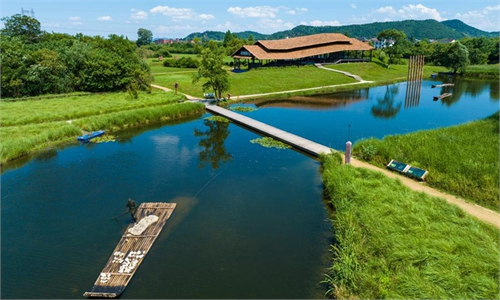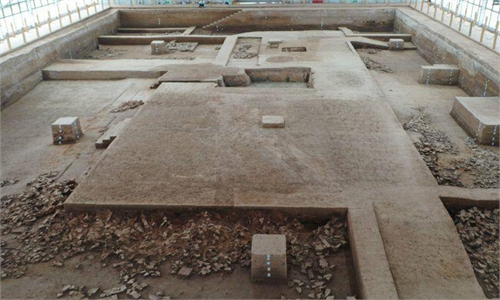ARTS / CULTURE & LEISURE
Taosi National Archaeological Site Park inaugurated in N.China
Findings shed light on origin of 24 solar terms

Taosi National Archaeological Site Park in Linfen, North China's Shanxi Province Photo: Courtesy of Gao Jiangtao
A batch of cultural and community activities are set to be held at the Taosi National Archaeological Site Park that was just inaugurated on Tuesday, according to a document from the local culture relics bureau sent to the Global Times on Wednesday.The archaeological park, located in Linfen, North China's Shanxi Province, was listed as one of China's national archaeological site parks on 2025's Cultural and Natural Heritage Day.
The Taosi site is a large Neolithic settlement site from the late Neolithic period. It is believed to most likely be the ruins of the capital city during the period of Yao and Shun - two sage emperors from more than 4,100 years ago.
After 47 years of continuous archaeological work, over 5,000 cultural relics have been unearthed, shedding light on the early forms of Chinese civilization.
Gao Jiangtao, a research fellow at the Institute of Archaeology, Chinese Academy of Social Sciences, and head of the Taosi archaeological team, told the Global Times on Wednesday that the new archaeological site park, with a total planned area of 519.38 hectares, will fully present experts' archaeological findings and research results.
"The presentation is based on more than 40 years of archaeological discoveries and research, combined with the concept of systematic protection and inheritance of cultural heritage in the new era," he said.
One of the park's highlights is the discovery of an ancient Taosi observatory, Gao said.
"This discovery indicates that the ancient Taosi people could accurately divide the year into 20 solar terms, making it a major source of China's traditional 24 solar terms," Gao said, going on to explain that the gui chi (ancient Chinese astronomical measuring instrument) unearthed at the Taosi site is the earliest physical example of a gnomon-based instrument found through archaeology worldwide.
According to the document, the Taosi city site is divided into different functional areas.
The northeastern part is a central area where the palace city and palace complex were located. Near the southwest of the palace city is a residential area for lower-class nobles, and near the south is a storage area.
The early Taosi cemetery is located in the southeast of the city site. Further south, a small "knife-shaped" city was separately enclosed as a special religious and sacrificial area, where the famous observatory remains and the mid-Taosi period cemetery were discovered.
The southwest of the city site was a handicraft workshop area, while the northwest was the residential area for the common people.
With two main roads, the archaeological park boasts 20 key nodes of important archaeological discoveries that are connected in a chain-like manner throughout the tour route.
A variety of on-site display methods and digital technologies are used to fully demonstrate the rich connotations of the Taosi site as an ancient capital city.
Currently, the park has opened several exhibition areas, including the Taosi Site Museum, the Astronomical Archaeology Museum, the palace city walls, the palace area, and the archaeological excavation site.
The Taosi National Archaeological Site Park serves as both a platform for centrally displaying Taosi culture and an integral part of the Taosi Site Park.
With three major exhibition areas and an exhibition space of 5,000 square meters, it showcases 230 items of selected pottery, jade, and other artifacts from the more than 5,000 unearthed cultural relics.
"Many precious cultural relics have been unearthed at the Taosi Site so far, allowing us to glimpse the daily life and production of our ancestors from more than 4,000 years ago. Among them, the painted dragon plates, flat pots with inscriptions, and jade beast-faced artifacts have truly become national treasures,'" Gao added.
"These findings illustrate a new important phase in Chinese civilization's formation and development," echoed Yan Yalin, director of the National Cultural Heritage Administration Archaeology Department.
In the future, a variety of cultural and educational activities and community events will be carried out at the Taosi National Archaeological Site Park.
The site was first discovered in 1958, while formal archaeological excavations began in 1978. The site was incorporated into the project to trace the origins of Chinese Civilization in 2002, the document noted.




